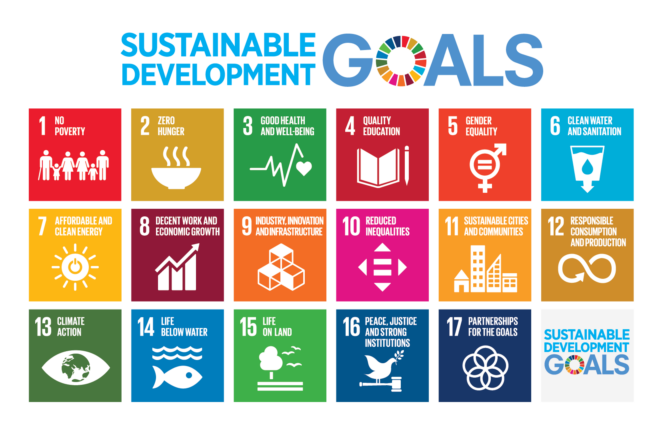SDG Audit Results Framework

by Paula Hebling Dutra, Federal Court of Accounts-Brazil
The new Sustainable Development Goals (SDGs) were negotiated as a result of a global commitment made at Rio+20 to be implemented from 2016 until 2030. The SDGs will be at the center of the post-2015 development agenda. The goals will pose many challenges for national development strategies of all countries, with important implications for domestic policies in a wide range of areas.
The issues presented to us by the new set of goals are not new to the international community. Some of them were already considered by the Millennium Development Goals (MDGs), others were present as the main issue or as subsidiary issues in a multitude of other international agreements and UN resolutions adopted over past years. This is because the SDGs are bringing together issues that are basic development priorities. Issues that, in some measure, are relevant for all countries.
Due to their position on national systems, their mandate over all areas of governmental expenditure, and their active cooperation in global and regional organizations, Supreme Audit Institutions (SAIs) can positively work toward the successful achievement of the SDGs. SAIs, for example, can be instrumental in ensuring that national governments are placing these international commitments in their agendas and pursuing them with transparency and accountability.
A careful look at all objectives and targets from the adopted documents will show that SAIs are already familiar with many, if not all, of these issues. They are recognized as essential development issues in which government action is traditional in all countries, and therefore, SAIs have also come across them.
In order to collect all this knowledge and experience already in place in SAIs worldwide, a framework was developed to gather, in a structured way, results from audits that were already carried out by SAIs on the many issues covered by the SDGs. The four-step approach builds on findings from the INTOSAI Working Group on Environmental Auditing (WGEA) and are described below.
Step 1: Succinctly Describe the Audit Conducted
In order to give readers the necessary context and basic information regarding the audit conducted, start with a concise description of the audit. The description should contain at least the following information: 1) background and importance of the topic; 2) objective and scope of the audit; and 3) approach and methodology.
Step 2: Identify Which Objective or Target was the Subject of the Audit
The SDGs comprise a list of 17 goals, 169 specific targets and a set of indicators associated with each of the targets as a means for follow-up and review of their implementation. The task then would be to read carefully through these goals and targets to identify which topics were addressed by the audit.
Step 3: Analyze Audit Conclusions Through Defined Risk Factors
In 2011, in order to prepare a submission to the United Nations Conference on Sustainable Development (Rio+20), the WGEA conducted a survey to identify the main observations that SAIs around the world consistently find when conducting environmental audits. The 52 respondent SAIs identified 10 top issues (http://www.environmental-auditing.org/LinkClick.aspx?fileticket=zo0JfbJMX2E%3d&tabid=261).
Even though the focus of the survey was environmental auditing, the issues identified can easily be adapted to the context of sustainable development and the topics covered by the SDGs. These issues can be used to conduct a sort of “risk assessment” describing factors that contribute to the poor performance of public policy addressing sustainable development areas. The main conclusions from the audit report can be summarized in one sentence and categorized into one or more factors from this list below:
1) Unclear/overlapping responsibilities
Due to the nature of the issues related to sustainable development, in many cases the institutional framework for sustainable development is cross-governmental and requires more work from governments in order to integrate economic, social, and environmental aspects. Governments have adapted to this new reality by creating more integration among ministries, departments and agencies, and programs and projects. However, there is a lack of clarity regarding the specific role each of these entities plays and what they are responsible for, resulting in overlapping responsibilities across agencies and departments. These overlaps compromise the effectiveness of policy coordination and duplicate efforts.
2) Lack of coordination between main stakeholders at sub-national levels and the national level/different ministries or government bodies/ civil society/private sector, and so forth
The cross-governmental nature of the issues related to sustainable development described above requires not only clear definition of responsibilities, but also a high level of coordination between all those involved. Many of the issues encompassed by the SDGs are not solely the responsibility of one specific ministry or even only of national governments. They occur at all levels, from local to global, and involve municipal, regional, and national governments. They also increasingly involve the active participation of civil society and business in the decision-making process through, for example, participatory councils. Governments need good integration and coordination of the work at all these different levels in order to implement policies and achieve intended results.
3) Absent or deficient policies or strategies
Some governments have not yet created effective policy tools and systems to govern sustainable development. Some have not improved public policy tools and processes as recommended. Targets, objectives, or commitments may be
in place for some policies, but they are not always supported by comprehensive and specific national, regional, or sectoral strategies, plans, and adequate means of implementation. Without the involvement of all affected levels of government, an overall policy or strategy cannot be well implemented and cannot achieve the desired national results.
4) Insufficient assessment of the environmental/social effects of governmental policies and programs
Some governments are not using policy tools to ensure more timely consideration of environmental or social aspects before large sums are committed to a policy, program, or project. High-level regulatory impact assessment or strategic social environmental assessment is not a concern for many governments, which can lead to undesirable consequences that set back the sustainable development agenda.
5) Lack of analysis (economic, social and environmental) supporting decisions
Some policy makers do not take into account the three pillars of sustainable development— economic, social, and environmental aspects— when making decisions. Sustainable development governance requires better integration of economic, social, and environmental policies, particularly within the broader development planning frameworks. Trade-offs and unintended consequences of policies should be taken into consideration as well when deciding on a policy approach.
6) Lack of long-term planning to implement policies and programs
Issues requiring long-term planning, such as climate change adaptation, sometimes do not have corresponding planning processes or plans in place. Sustainable development is about the future as much as it is about the present. Many times an issue might not be a problem now, but if not addressed it can have serious consequences in the future.
7) Inadequate financial management of policies and programs
Financial management problems can be caused by insufficient planning, resulting in unanticipated costs of implementing intended policies and programs. Other problems include the absence of an appropriate financial management framework to support the implementation of policies and programs, the lack of financial management skills, and the misuse of funds.
8) Lack of enforcement of domestic legislation
Many laws are not self-executing, and governments must ensure compliance with domestic environmental legislation by taking appropriate, effective, and proportionate policy measures. Compliance requires administrative capacities and strong government commitments to implement and enforce the regulatory framework.
9) Deficient monitoring and reporting systems
High-quality accountability and reporting systems are often lacking. Evaluations of key policy choices and instruments are not always in place. In the absence of a good evaluation, it is difficult for governments to report and measure their progress toward sustainable development or to identify where further policy action is required.
10) Lack of data for decision-making
Many government bodies do not have sufficient and robust data to support their decisions and to evaluate their performance. There are problems in data availability, timeliness, quality, and accuracy. Overall, there is a lack of knowledge and information and a failure to adequately use the existing information to support management decisions.
Step 4: Considerations Regarding Audit Conclusions and the Achievement of the Identified Targets
Since the objective of the framework is to gather information of audits already carried out by SAIs regarding topics contained in the SDGs, this last step is intended to conclude this effort by going back to the targets identified before and, in light of the conclusions and factors from step 3, reflecting on what can be identified as important findings regarding the implementation of the related goals and targets.
Way Forward
This framework was applied to three audits carried out by the Federal Court of Acconts – Brazil (TCU) and a “proof of concept” report, with further application of the framework in audits conducted by other SAIs, is currently being planned and should be completed for INCOSAI XXII.





